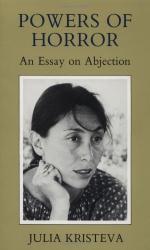
|
| Name: _________________________ | Period: ___________________ |
This quiz consists of 5 multiple choice and 5 short answer questions through Chapter 5, . . . Qui Tollis Peccata Mundi.
Multiple Choice Questions
1. In some societies, Kristeva says a person who is defiled becomes clean how?
(a) Through God.
(b) Through rejection.
(c) Through rites.
(d) Through love.
2. Whose work does Kristeva look to help explain the relation of impurity and the abject?
(a) M. N. Srinivas.
(b) Émile Durkheim.
(c) E. E. Evans-Pritchard.
(d) Mary Douglas.
3. What example does Kristeva give for the imagery of separation as shown in the Gospel?
(a) Sharing of fish.
(b) Jonah and the whale.
(c) Multiplication of loaves.
(d) Noah and his ark.
4. What does Kristeva say it is necessary for a child to do because he has to repress his primal fears that still exist in him?
(a) Learn to express them.
(b) Adapt to them.
(c) Get rid of them.
(d) Ignore them.
5. Kristeva says Freud is successful in his treatment of the subject-object relation when he approaches it from the perspective of what?
(a) Love.
(b) Desire.
(c) Fear.
(d) Hate.
Short Answer Questions
1. Kristeva says the abject is somewhere between being an object and what?
2. In Judiasm, people are instructed to be wary of men with what trait?
3. Traditionally, Christians link all sin to what?
4. To whom does Kristeva attribute the theory of structural anthropology?
5. What does Kristeva name as the chief features of the abject?
|
This section contains 239 words (approx. 1 page at 300 words per page) |

|




